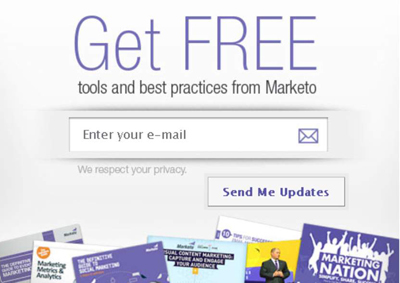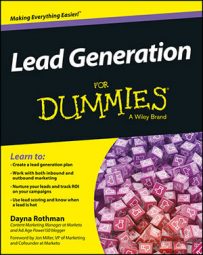If you are doing a ton of top-of-funnel lead-generation tactics, you are casting a wide net and introducing people to your company very early in the buying process. But after you have plenty of leads in your database, what do you do with them? Lead generation doesn't stop at acquisition.
Your leads have a buying journey to go through, and by engaging in middle-of-the-funnel marketing tactics such as email marketing, you can ensure that you are speaking to your leads in all stages of the buying journey.
It is important to note that email marketing is no longer about email blasts. Email blasts are those old batch-and-blast spammy emails that marketers used to send to leads. Those just don't work anymore, particularly with new email advancements like the new tabbed inbox in Gmail that automatically puts promotional emails in a separate tab from the user's primary messages. Marketers have to work to get their email messages seen.
Navigating the email opt-in
You want your leads to opt in to your communication — meaning, they are asking and agreeing to receive email communication from you. If they don't opt in, they will quickly perceive you as spam. If they do opt in, your leads can expect to receive your emails, and you become more trusted.
Here are some types of opt-ins to consider:
Single opt-in: A lead enters his email address and other information into a form. He is immediately subscribed to your emails. Implicit opt-in is when your lead fills out a form to receive a content piece or offer, and explicit opt-in is when a lead signs up for your email marketing through a form on your website.
Single opt-in with a welcome email: After a lead opts in implicitly or explicitly, she receives an auto-response email thanking her and welcoming her to your email correspondence. You can include messaging in this email about other offers and you should touch on what the lead can expect from your communications.
Confirmed opt-in: After a lead enters his email address, a pop-up lets him know to expect another email with a link for confirmation. A few seconds later, a confirmation email is sent and the lead needs to click on the link to be confirmed.
As an example of a single explicit opt-in, take a look at the following figure. Note that the call-to-action (CTA) says Send Me Updates, so leads know that if they fill out this form, they will receive updates.

Keeping yourself out of the spam filter
Having opt-ins and providing the opportunity for leads to unsubscribe is one way to keep your messages out of the spam filter. But what is spam and why and when do leads decide an email is classified as spam?
A lead might consider the following spam:
An email that is unexpected
An email that is unwanted
An email from an account that a lead has previously unsubscribed to
Email copy that seems spammy — overuse of words like free and deal, for example, or the inclusion of a lot of exclamation points
An email a lead no longer wants
Your best bet for keeping out of the spam filter is to create emails that are interesting, engaging, relevant, and that offer a WIIFM (What's In It For Me). For example:
Dear Subscriber,
We promise to
Send emails you actually want
Deliver those emails when you want them
Use data we collect from you to send targeted, relevant information
Sincerely,
The ABC Marketing Department
In 2003, an act called CAN-SPAM (Controlling the Assault of Non-Solicited Pornography and Marketing) was introduced to establish rules of engagement for commercial marketing messages and give recipients the right to enforce that a business stop emailing them. The act outlines numerous rules by which a commercial emailer must abide, including providing clear and easy ways to opt-out of communications and adding a physical postal address on every email sent out, and so on. As a marketer, be sure to check out the exact rules and regulations and meet with your legal or compliance team.
Listening to social cues
Another way to ensure that your emails are engaging is to integrate your email campaigns with your social marketing. Your leads and customers are living in a multichannel world, so be where they are. You can combine your social efforts and email marketing by
Using your email list to grow your social followers through sharing buttons
Using email to extend your social campaigns, and vice versa
Using social media to grow your email list and promote your email content
Always including a social icon on all of your emails so people can follow you and share your message
Sending a dedicated email to your database and asking that they engage with you on social channels

